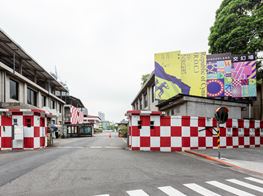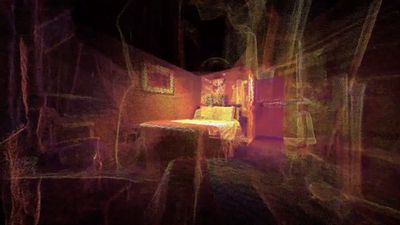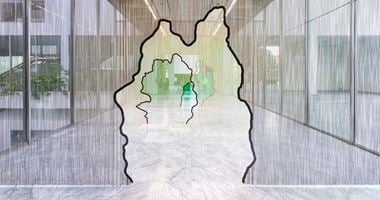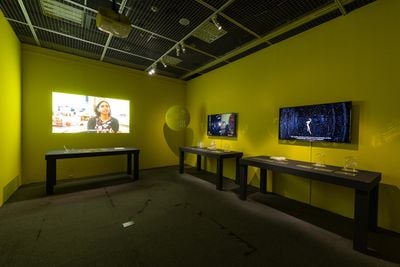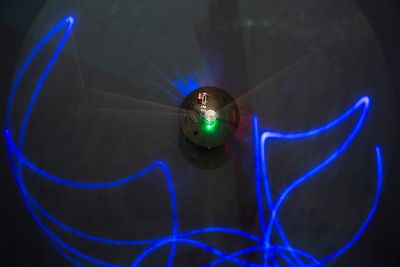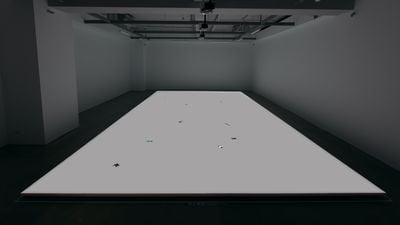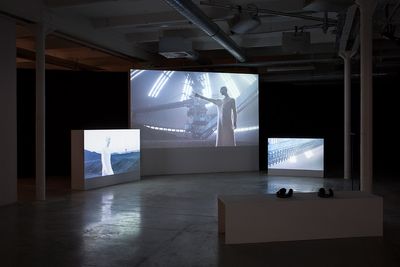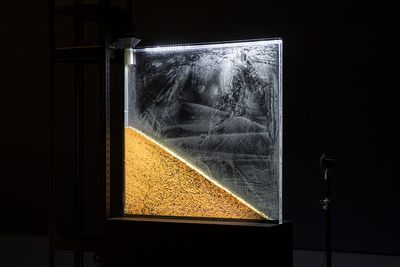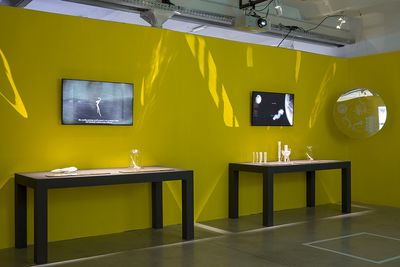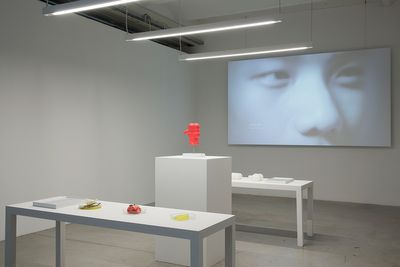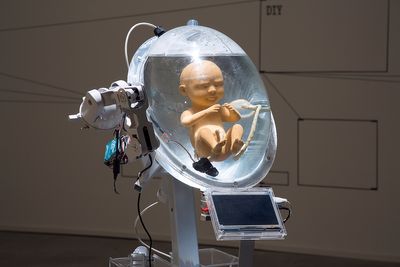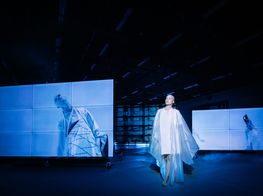CHRONIQUES, the Biennale of Digital Information Invites Taiwan to France
Taiwan Contemporary Culture Lab (C-LAB) | Sponsored Content
Between 12 November 2020 and 17 January 2021, CHRONIQUES, the Biennale of Digital Information brings contemporary art and digital technologies together in a virtual exhibition and in venues across Aix-en-Provence, Marseille, and Avignon in France.
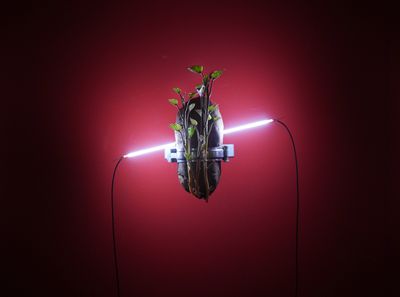
Chuang Chih-Wei, Infection Series: Commensalism (2020). Exhibition view: CHRONIQUES, the Biennale of Digital Information, Friche la Belle de Mai, Plateau 4, Marseille (7–17 January 2021). Courtesy the artist.
For its second edition, CHRONIQUES has invited Taiwan as a guest of honour, following Quebec's invitation in 2018. Taiwan Contemporary Culture Lab (C-LAB) is serving as curator, showing works by 11 new media artists and collectives from Taiwan that explore the connections between technology, science, art, humanity, and the environment under the theme of 'Eternity'.
As C-LAB curator Wu Dar-Kuen told Ocula Magazine, Taiwan is renowned for both its culture and technological innovation.
At CHRONIQUES, this is reflected through works that engage not only with technology, but also with contemporary societal and cultural concerns.
Singing Chen's VR film Afterimage for Tomorrow (2018) begins with the promise of eternal memory: in a futuristic world, the 'Afterlife Memory Trust' offers a service that enables its clients to relive three of their memories when they die.
Before they are stimulated, however, memories must be renounced, calling into question 'what in life is worth storing.' Accompanied by a throbbing soundtrack and performances choreographed by Shu-Yi Chou, the film reminds viewers—whose real-world technologies cannot yet afford such luxury of saving memories—the precarious conditions for and improbability of eternity.
By contrast, the small-scale mechanical devices of Tsai Yi-Ting are set in perpetual motion. A toy car runs on a conveyor belt in Somewhere in Time II (2018), neither stopping nor reaching a destination; a rod of neon light repeatedly traces lines in circles and irregular patterns in Nonlinear Science: Chaos (2020).
In their continuous motion, Yi-Ting's works dismantle the boundaries of past, present, and future, collapsing the perception of time as linear. Yet her devices adhere to a certain order, maintained within each of their respective worlds.
In Turning World (2017), Chen Wan-Jen recycles existing images and footage of ordinary life until they become locked in a seemingly endless loop. The screen, presented on the floor, features a bird's-eye view of figures 'slowly rotating with the world in parallel', in the words of the artist.
If technology enables artists to seal off worlds, it also enables them to create virtual environments that traverse time. In his three-screen video installation Future Shock (2019), Su Hui-Yu visits the past by filming sites across Kaohsiung that recall the explosion of new ideas in the 1970s—modernist architecture, amusement parks, and power plants, among others—that now appear strange yet familiar.
Hung Wei-Hsuan's Modernological Urbanscape (2019) similarly explores memory of space in his study of architecture from different periods, which has been rendered digitally from physical sites.
If technology enables artists to seal off worlds, it also enables them to create virtual environments that traverse time.
Analogy prevails in The Rice-Pile Model (2020), presented by the artist collective Legacy Lab International, in which a mechanical device releases different grains on a slope, which accumulates until it collapses, mimicking phenomena such as avalanches or the spread of diseases. Each motion is matched with sounds derived from these phenomena, reminding viewers of the interconnectedness of environmental issues of the day.
In Infection Series: Commensalism (2020), which consists of live plants and fluorescent lights paired together, Chuang Chih-Wei creates a visual representation of parasitic invasion.
Taking the process of viruses invading the human body as inspiration, the artist reflects on the symbiotic relationship between living organisms (plants) and non-living organisms (cold cathode lamps).
Science and art join forces once more in Millennium Ginseng Project (2018–2019): Ku Kuang-Yi's three-part project that attempts to cultivate a new species of ginseng that will appease the root's high demand in traditional Chinese medicine.
Collaborating with scientists, the artist developed models and videos that speculate a future scenario where ginseng will be grown on the moon.
Evolution with the aid of technology is among Paul Gong's concerns in The Appendix-Human (2019), which considers possible modifications of the appendix to serve new functions through speculative video interviews with scientists and plastic sculptures.
For Future Baby Production, an initiative led by artists Shu Lea Cheang and Ewen Chardonnet, however, the future lies outside the human body: UNBORN0X9 (2020) presents a prototype for artificial wombs, prompting questions about the new relationships that ectogenesis may engender.
At a time when the world relies, more than ever, on technology to maintain connections, Cheng Hsien-Yu's Discharge what you charged (2020) calls for a temporary respite from the virtual world.
Consisting of mechanical structures, each fitted with a cube platform, the work discharges visitors' mobile phones to allow for a pause from the digital—albeit one made possible with technology.—[O]

